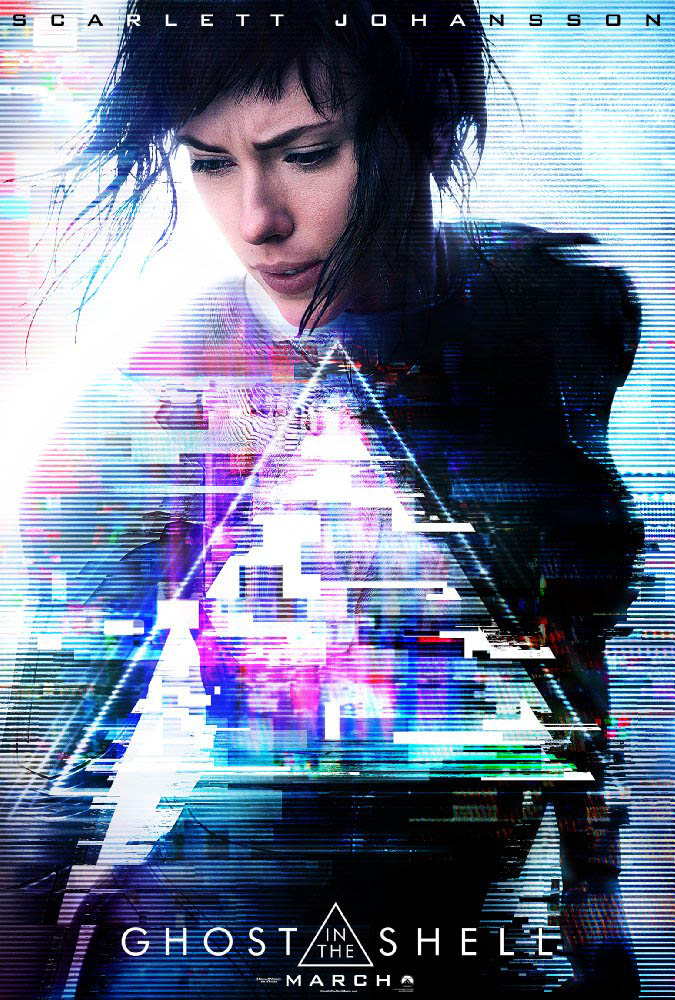By Andrew Kendall
Last month, Scarlett Johansson hosted Saturday Night Live for the fifth time. While some casual movie fans may only recognise her as an Avengers team member, she’s an excellent comedienne. The most memorable sketch of the night was a clever riff on Ivanka Trump’s role in the Trump administration. The sketch, done in the mode of a perfume ad, suggests that there’s only one scent for a woman like Ivanka: “She’s beautiful, she’s powerful, she’s… complicit.”
Scarlett amusingly captured the parochial feminism that Ivanka espouses, while never getting didactic. It was not long before the more sceptical (but not incorrect) commentators on the internet began wondering whether she was aware that “Complicit” was as much as a scent for Ivanka as it might be a scent for her.

The new movie Ghost in the Shell has been dogged by controversy since Scarlett Johansson was announced as the lead, taking on a role that’s Japanese in the source material. Johansson’s casting was one – in a series – of casual disregard for the Asian market and the Asian actors in and out of Hollywood. It’s the sort of casual erasure that’s unfortunately familiar in the film industry and entertainment world.
The film opens with a revolutionary idea to develop a completely mechanical body – a shell – that can integrate a fully functioning human brain. This body is Major (Motoko Kusanagi in the original), the first of her kind, we’re told. She is a synthetic, augmented-cybernetic human, who is employed as a Field Commander somewhere in a futuristic Japan. The futuristic Japan Major inhabits looks curiously like a counterfeit version of the dystopian Los Angeles presented in Ridley Scott’s Blade Runner. And in this future Japan, the only three Japanese women are either geishas or an elderly mother.
Before we even consider the identity politics, Ghost in the Shell wavers with a thesis that’s ambivalent at best. Its main argument seems to be that technology is destroying us but its ambivalent treatment has value since Major is half a technological creation. Still, it’s not clear whether the film means to lean into this ambivalence when it’s most confident dealing with the synthetic than with the more emotional or humanistic. It tells us that humanity is the best thing about our world, but it shows us a world on screen that’s uncomfortable when it deigns to consider the interpersonal.
I feel bad for the film. It operates with an awareness of its own limitations that’s crippling and the late in the film twist which tries to explain away the casting of Johansson is never examined enough to feel authentic. The very issues which plague it—uncertainty, no clear vision, general tepidness—are unlikely to be greatly improved with a Japanese actress in the lead. That’s not the point. Neither is the point that Johansson, in a deliberately robotic performance, adds a necessary élan to the film. She’s so committed to this cypher of a role that it’s hard not to applaud. What is the point is in the fact that so many articles about the casting imbroglio call it a white-washing and not an Asian erasure. The former sounds almost winsome, just an essential spring cleaning – the latter is more obviously insidious. Ghost in the Shell comes off the screen as so harmless to the point of boring, you might watch it and think, “What’s all the fuss?”
Paramount admitted this week that the controversy behind the casting issues was a reason for the film’s failure at the box-office. I’m not certain about that. The general failures of The Great Wall (Matt Damon as another white saviour in Asia) and Ghost in the Shell at the box office might signal a commercial re-evaluation of Asian erasure but then it’s easier to dogpile on these films because they are just not very good. There’s little risk that comes with attacking a lame duck. It’s easy. When the problematic films which get most criticised are the ones that are already problematic for reasons beyond its race issue, it seems like a lazy opt out.
The film does have one scene that immediately sticks with you, the deftest in a line of action sequences that are commendable but not exemplary. Major does a deep dive into a robot, like a literal diving into a machine’s software, at a risk of being contaminated by its viruses. The design for this dive and the entire sequence is the film’s most compelling and director Rupert Sanders one moment of surety. Naturally, Major is contaminated in the sequence and I could not help but wonder how race relations in Hollywood might be different if everyone involved in cultural erasure was as irrevocably contaminated when they dive into its insidious heart.
That would not solve the problem, though. Beyond the very activist oriented filmgoer, a casual viewer may engage with Ghost in the Shell as just another run of the mill feature. Does that mean the casual filmgoer is in the wrong by not doing more research into the source of films and how they get cast? Is it the same complicity that has the film being sold to us in 3D when it’s futuristic elements like this that the characters ultimately seem to frown on? Too many questions, probably. Ghost in the Shell might flirt with something profound but it’s not really interested in digging beneath the surface. It’s the same way Hollywood engages with Asians on screen, cursory and on the peripheral but rarely with depth.
Have a comment? Write to Andrew at almasydk@gmail.com

